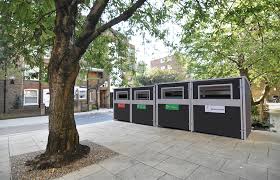Every year, 292 million tons of municipal solid waste are generated in the U.S., but only 32% is recycled. Missteps in waste storage contaminate 25% of recyclables, squandering resources and costing households up to $1,500 annually. This guide answers the pressing question: Where is the appropriate place to store waste and recyclables? Discover actionable strategies to minimize environmental impact, maximize savings, and comply with safety regulations—starting today.
Why Proper Waste and Recyclable Storage Is Non-Negotiable
Improper storage isn’t just messy—it’s hazardous. Consider these consequences:
- Health risks: Rotting food attracts pests like rodents and cockroaches, which spread 35+ diseases.
- Environmental harm: Leached chemicals from electronics or plastics poison soil and waterways.
- Financial penalties: Businesses face fines up to $10,000 for violating OSHA waste guidelines.
Proper storage isn’t optional; it’s essential for safety and sustainability.
Where Is the Appropriate Place to Store Waste and Recyclables Indoors?
Indoor storage demands precision to balance convenience and hygiene.
| Location | Best For | Container Type | Pro Tip |
| Under the sink | Food scraps, small recyclables | Airtight 5-gallon bin | Use compostable liners to curb odors |
| Laundry room | Paper, cardboard | Vertical chute with lid | Flatten boxes to save space |
| Garage | Glass, plastic, bulk items | Heavy-duty wheeled bins | Label sides for easy identification |
| Pantry | Batteries, e-waste | Fireproof lockbox | Check local drop-off sites monthly |
Case Study: A Boston café reduced cross-contamination by 80% using color-coded bins (green for compost, blue for recycling).
Where Is the Appropriate Place to Store Waste and Recyclables Outdoors?
Outdoor storage requires strategic planning to withstand weather and pests.
Checklist for Ideal Outdoor Storage:
- Distance: Keep bins 10+ feet from buildings to deter rodents.
- Shade: Prevent plastic degradation by placing containers under awnings or trees.
- Elevation: Use pallets or concrete slabs to avoid flood damage.
- Security: Install locking lids to thwart raccoons and stray animals.
Example: A Phoenix apartment complex cut pest complaints by 95% by mounting motion-activated lights near bins.
7 Costly Mistakes (and How to Fix Them)
Avoid these pitfalls to optimize waste management:
- Overfilled Bins
- Risk: Spills block drainage systems.
- Fix: Empty bins at 75% capacity.
- Mixing Recyclables
- Risk: Contamination leads to landfill dumping.
- Fix: Label bins with icons (♻️ glass, ♻️ plastic).
- Ignoring Local Guidelines
- Risk: Fines for incorrect curb placement.
- Fix: Bookmark your municipality’s waste portal.
- Skipping Liners
- Risk: Sticky residue breeds bacteria.
- Fix: Use ASTM D6400-certified compostable bags.
- Poor Ventilation
- Risk: Methane buildup in organic waste.
- Fix: Drill ½-inch holes in compost bin lids.
- Neglecting Cleaning
- Risk: Odors permeate living spaces.
- Fix: Scrub bins monthly with vinegar and baking soda.
- Unsecured Hazardous Waste
- Risk: Chemical fires or leaks.
- Fix: Store paint, batteries, and oil in UL-listed containers.
Industry-Specific Solutions: Where Businesses Should Store Waste
Tailored strategies enhance compliance and efficiency:
Restaurants
- Grease Traps: Place 50+ feet from kitchens to meet FDA codes.
- Organic Waste: Store in chilled bins to slow decomposition.
Hospitals
- Biohazard Waste: Use red, tamper-proof containers in secure rooms.
- Pharmaceuticals: Equip disposal units with RFID tracking.
Retail Stores
- Recycling Stations: Position near exits—68% of shoppers participate if bins are visible.
- E-Waste Kiosks: Partner with retailers like Best Buy for free recycling.
Result: A Chicago grocery chain saved $12,000/year by donating expired produce to local farms instead of trashing it.
FAQs: Your Waste Storage Questions, Answered
Q: Can I store lithium-ion batteries in plastic bins?
A: No. Use metal containers to prevent fire risks.
Q: How do I stop outdoor bins from smelling?
A: Sprinkle baking soda weekly and rinse with a hose.
Q: Are there apps to track pickup schedules?
A: Yes! Try RecycleCoach or Waste Wizard for reminders.
Take Action: Optimize Your Waste Storage in 3 Steps
- Audit: Map current storage zones using your phone’s camera.
- Upgrade: Invest in OSHA-compliant bins for hazardous materials.
- Educate: Host a workshop using EPA’s Tools for Communities toolkit.
Final Tip: Share your progress on social media—77% of people adopt eco-friendly habits after seeing peers succeed.

